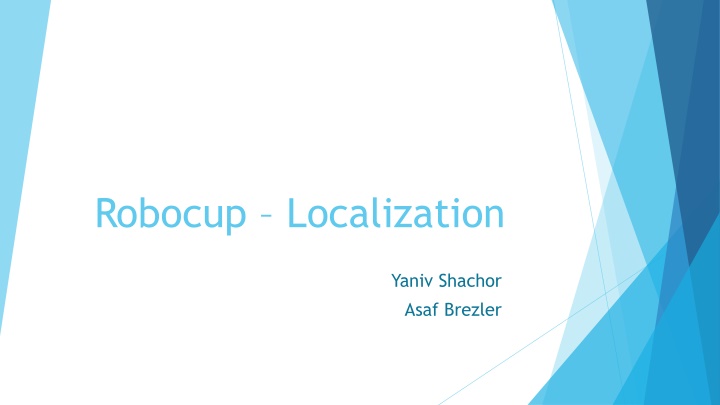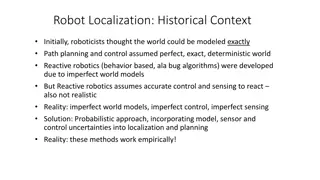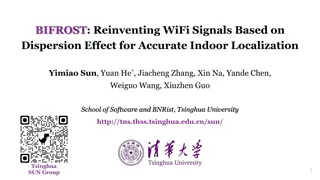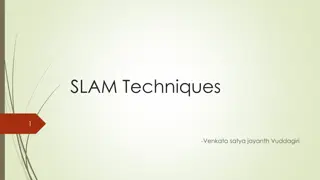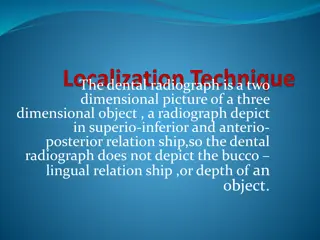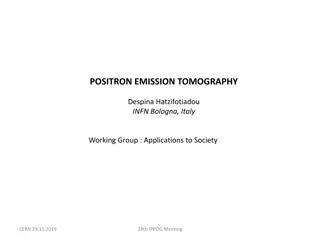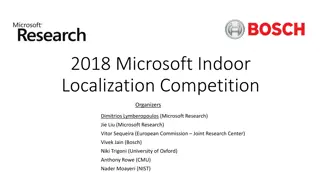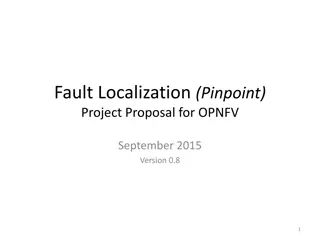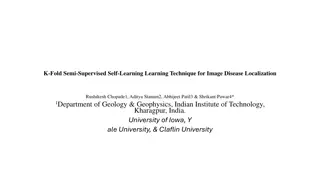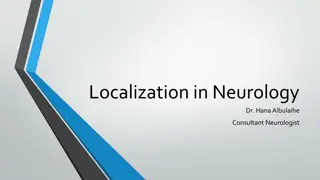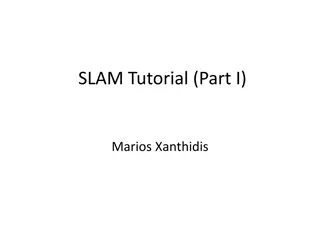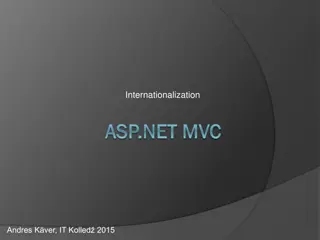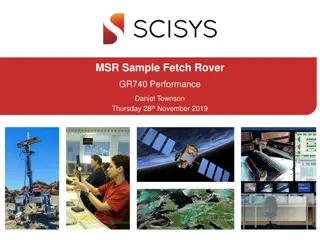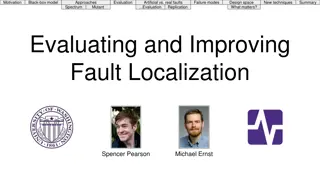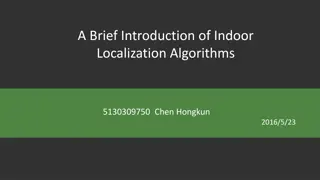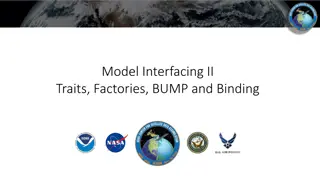Robocup Localization: Key Functionality and Benefits
Localization of the robot is essential for its functionality, aiding in decision-making and problem-solving. Implementation involves finding the robot's location using vision, gyro, and motion inputs to estimate its position accurately. Accomplishments include implementing the Particle filter algorithm and aiming to win competitions.
Download Presentation

Please find below an Image/Link to download the presentation.
The content on the website is provided AS IS for your information and personal use only. It may not be sold, licensed, or shared on other websites without obtaining consent from the author.If you encounter any issues during the download, it is possible that the publisher has removed the file from their server.
You are allowed to download the files provided on this website for personal or commercial use, subject to the condition that they are used lawfully. All files are the property of their respective owners.
The content on the website is provided AS IS for your information and personal use only. It may not be sold, licensed, or shared on other websites without obtaining consent from the author.
E N D
Presentation Transcript
Robocup Localization Yaniv Shachor Asaf Brezler
Localization Introduction & benefits Localization of the robot is one of the main keys for the functionality of the robot. It helps the robot understand its position and derive the consequences following that. Localization is used instead of, or in addition to, the vision and image processing of the robot. It can be used in making decision and solving problems that the vision may encounter. Among that: Symmetric vision problems. e.g. in case the robot sees only a white line, he won t be able to decide which line in which side of the court it is, if localization is not used. Planning next move. According to the knowing of its location, a robot can determine what should be its next move whether to go to ball, come back to defense or move to the center of the goal (in case it is a goalkeeper).
Localization Implementation How can we implement localization? Problem: find Robot location [ X Y ? ] at time t Inputs: samples from the robot vision, internal gyro, robot motion Model: Create an array of possible locations in the space (sample the locations wisely). For each sample, Calculate the possibility to be in each place , using the distribution at time t-1, the inputs above, the state transition probability and the measurement probability. Refer the most dense location as the most probable location of the robot. Use iterative algorithm, that will converge after few iterations to estimate one area with high probability.
Localization - Accomplishments & targets Accomplishments: Implement a compass by the build-in gyro of the robot. This will help us knowing the current angle and direction the robot stands at the moment. Learning the localization problem and ways to solve it, mainly the Particle filter algorithm. Support and design of the robot s brain, decision making and FSM (finite sate machine). Targets: Full implementation of the Particle filter algorithm. Win the competition in Germany! (June-July 2016)
